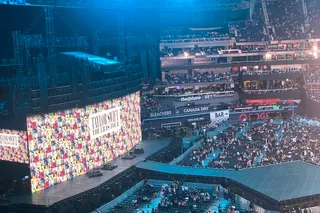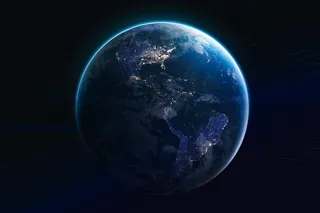
Michael Gratzel has come clean and revealed that he stole his award-winning design for a new kind of solar cell--stole it from a leaf, that is. The Swiss inventor and first prize-winner of the $960,000 Millennium Technology Prize believes he has a cheap way to power everything from cell phones to street lamps, copying plants' power to harness sunlight and turn it into energy.
"I was always intrigued with natural photosynthesis," Gratzel says in a Millennium Technology Prize video (see below), "the way the plant uses molecules to generate charges."
His solar cells aren't as efficient as the current silicon photovoltaic panels, but they do use cheaper manufacturing materials.
"Gratzel's innovation is likely to have an important role in low-cost, large-scale solutions for renewable energy," Ainomaija Haarla, president of Finland's Technology Academy, says in a prepared news release on the group's website. [CNN]
Gratzel can also make his solar cells transparent or flexible. This means that designers might integrate them into existing structures, for example windows or even furniture.
"You can imagine using those cells as electricity producing windows.... What's very exciting is that you collect light from all sides, so can capture electricity from the inside as well as the outside.... You could think that the glass of all high-rises in New York would be electricity generating panels," he said. [BBC]
In 1991, Gratzel published a paper in Nature on how the cells, which use a mixture including a (not necessarily green) dye, absorb light and create an electric current.
Only 10 micrometers thick, the [dye] mixture is sandwiched between two glass plates or embedded in plastic. Light striking the dye frees electrons ... [and] semiconducting titanium dioxide particles collect the electrons and transfer them to an external circuit, producing an electric current. [eWeek]
Gratzel believes the cheap cell will prove essential in India and Africa, where he foresees its use for communications and medical purposes. Related content: 80beats: The Dream: Print-Out Solar Panels That Can Be Stapled to Your Roof 80beats: Glitter-Sized Solar Cells Could Be Woven into Your Power Tie 80beats: Self-Assembling Solar Panels Use the Vinaigrette Principle DISCOVER: Sun Catcher Promises Cheaper Solar Power
Image: flickr / seeks2dream













